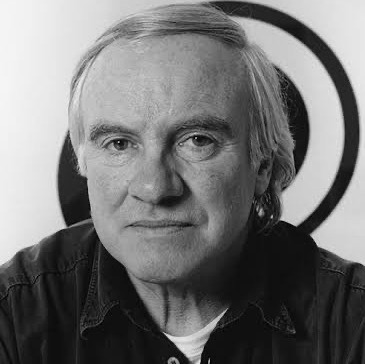
Patrick Caulfield
Patrick Caulfield, a distinguished British painter and printmaker, stood as a leading figure among post-war artists.
Biography of Patrick Caulfield
Born in West London in 1936, Patrick Caulfield graduated from the Chelsea School of Art in 1960. His journey to Crete in the same year left a lasting impact, with Minoan art's vibrant frescoes and bold colors influencing his artistic direction.
From 1960 to 1963, he pursued studies at the Royal College of Arts. In 1964, he gained recognition through a significant exhibition at the Whitechapel Gallery, marking the beginning of his rise to prominence. During this period, he was associated with pop art luminaries such as David Hockney, Allen Jones, and R.B. Kitaj. Notable works from this era include "Still Life," "Pottery," and "Sweet Bowl."
In the mid-70s, Caulfield shifted his style towards more detailed paintings featuring realistic elements, prominent black outlines, and flat colors. He employed a range of styles, often dominated by a single hue and simple, figurative objects set within interior scenes. In 1987, he earned a nomination for the prestigious Turner Prize. Besides painting, Caulfield ventured into printmaking, creating a total of 111 print screens that received high acclaim and demand.
In 1993, he became a Royal Academician, and in 1996, he received the Order of the British Empire.
Within the realm of fellow painters and the art world, Patrick Caulfield commanded immense respect and affection. He died in London in 2005 at the age of 69.
Patrick Caulfield's Art Style
Patrick Caulfield's artistic approach is characterized by the absence of expressive gestures, instead favoring reductive compositions. His shapes and forms, distinct from the aesthetics of pop art, originate from careful observation. He portrays everyday objects from modern domestic life, infusing them with dry wit, humor, and a sense of wonder. His hallmark depictions of nameless locales and melancholic interiors devoid of human presence evoke a sense of suspended time or the quiet solitude of ultimate isolation — an elegiac drama without actors.
Despite the apparent simplicity, clarity, and plainness of his work, Caulfield adeptly employs a profoundly subtle manner to enhance and refine figuration, giving rise to images that remain ambiguous and enigmatic, transcending both time and context. Beneath the cultivated and quintessentially English surface—immaculate and emotionally controlled—lies a foundational Romanticism that Caulfield makes no effort to conceal. He is also acknowledged as a virtuoso of color, skillfully combining seemingly discordant hues to create potent visual impacts. As a talented painter, Caulfield imbues familiar objects with an air of unfamiliarity.
Years:
Born in 1936
Country:
United Kingdom, Acton, London
Gallery: